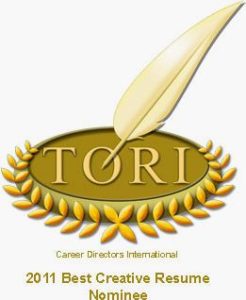In my How to Write a KILLER LinkedIn Profile webinar on June 22, 2012, delivered for ilostmyjob.com, an important question arose:  If you are a job seeker, how should you complete the “current position” item in your profile?
If you are a job seeker, how should you complete the “current position” item in your profile?
LinkedIn presents job seekers with a dilemma: The site requires an “up-to-date current position (with a description)” for a 100% complete profile (see Profile Completeness list on LinkedIn); and according to LinkedIn, 100% complete profiles are 40 times more likely to be viewed. But if you are a job seeker, you might not have a current position other than “job seeker.” Should you create a “filler” job description to be 100% complete? Or should you hope that 95%-or-so complete is enough?
Adding to this dilemma is that recruiters, according to experts in the careers industry, do not like to see made-up job descriptions in the current position spot. They prefer for job seekers to call a spade a spade, i.e., leave the current position description blank if they are not employed.
Resume and LinkedIn profile writers come down on multiple sides of this issue. There are upsides and downsides to all of these options; in the end, let the numbers (how many people find you, view your profile and contact you) guide your choice.
Option #1
One camp says to put something in the current position field indicating you are a job seeker. You might give yourself a job title such as “Target position: VP Operations,” or “Seeking next opportunity as Graphic Designer.” You can then write a description of what you offer that adds to what you wrote in your Summary. In the company name field, you might enter “—“or “Seeking next opportunity.”
Option #2
Some people recommend putting volunteer work as your current position, or your “job” as Manager of a LinkedIn group. I would not recommend either solution unless your volunteer or group manager work is close to full-time. There is a section you can add on LinkedIn called Volunteer Activities and Causes. That is the most appropriate spot in which to put your volunteer activities.
Option #3
A third camp says to leave the current job description blank if you don’t have a job, and to complete as many parts of the profile as possible. If your profile is 95% complete, you should still do well in searches.
The Essay Expert’s Recommendation
You might want to try both Option #1 and Option #3. I wouldn’t recommend Option #2.
The great thing about LinkedIn profiles is that you can always change them and do different things to see what works best for you. Try this:
(1) Write a current position that says, for example, “Target Position: General Manager, Automotive” or “Seeking Opportunities as Financial Analyst” or “Program Manager – Candidate” and track how many people view your profile and how often you are appearing in search results (this information can be found on your home page in the right-hand column).
(2) If you are getting sufficient activity in your profile, great. Don’t change anything! If not, the first thing to consider is whether you have enough connections to appear toward the top of searches. I recommend having 500+ connections in order to reliably raise your ranking in search results and increase page views.
(3) If you have 500+ connections and your profile is still not getting enough attention, either change what you have in the “current position” section or make it blank for a month. Track your profile views and appearances in search results.
(4) Repeat Steps #2 and #3 until you get the results you want.
There are more options than these of course. One place to get a sense of what might work is a Q&A on LinkedIn, begun by Executive Resume Writer Laura Smith-Proulx, which sheds some light on this question. https://linkd.in/xDJhgq
What strategies have been working for you? Please share your comments below. Or if you experiment with some of my suggestions, please report how it goes!










Hi Brenda,
I really appreciate all the valuable information you share. Just the other day, I contemplated doing something similar to Option #2 listed in your article but tentatively decided to leave my LI profile at 90% complete and do some research on the advantages versus the disadvantages of doing so.
Thanks to your article, I feel confident that I made the correct decision.
Kind Regards,
Pam (*-*)
Thank you Pam! Please let me know what response you get to your profile. Also make sure to optimize your profile using all the tips in my e-book so that you can get the best results possible. One reader last week got an interview less than a week after following the advice in my book!
Brenda,
As usual some very good advice. Though I am employed right now, this is good information to pass on to friends and family who are still relatively new to LinkedIn.
Regards,
Carl